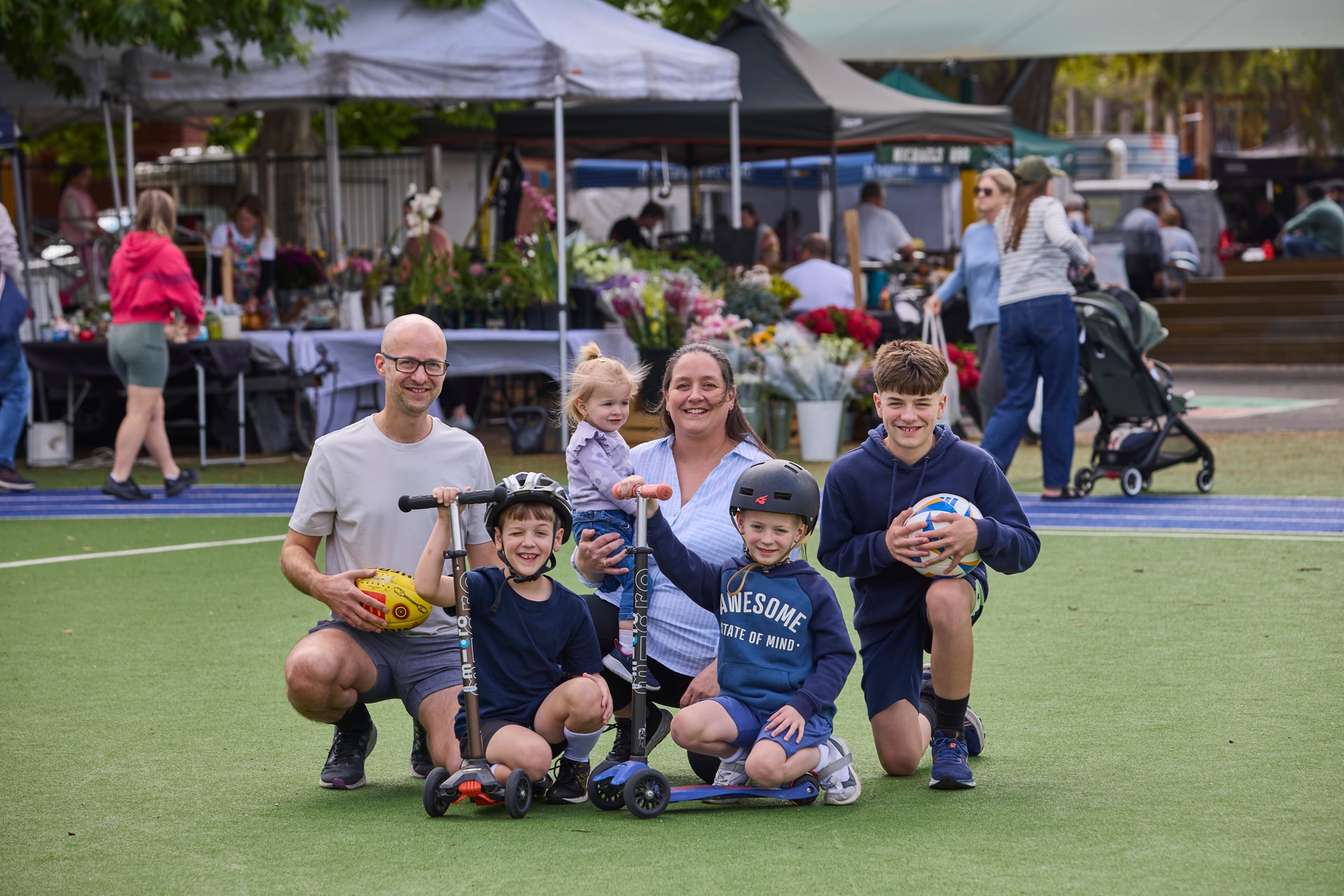Sharing government school grounds with the community will unlock more recreational space in Victoria's largest cities

The Victorian Government can provide much needed recreational space by supporting government schools to share more outdoor areas with the community outside school hours, the state’s independent infrastructure body recommends.
Infrastructure Victoria’s latest research, Getting more from school grounds: sharing places for play and exercise, finds health, well-being and other community benefits flow from supporting government schools to share sports fields, outdoor courts and playgrounds. It also makes better use of valuable government assets.
Outdoor sports courts and ovals on state government school land use about 450 hectares of space in Melbourne alone – the equivalent of 110 MCGs. Outside school hours, the community could use these facilities to play and stay physically active.
Infrastructure Victoria CEO Dr Jonathan Spear said: “This is not new-many government school grounds are already open to the community. As Victoria grows and more people live closer together, sharing more school grounds can benefit many more people in cities like Melbourne and, in the longer term, Geelong, Ballarat and Bendigo.”
The advisory body surveyed 4,000 Victorians about their views and access to recreational facilities. Of people who currently do not use any facilities, one in 5 said they would use a school sports field, outside of school hours, if it was open.
From this group, 62% of men and 55% of women were more likely to say they would use a school sports field, if available. People from non-English speaking backgrounds (34%) were also more likely to use a school sports field in their area, if it was open.
The research found 1.7 million Melburnians cannot access a community sports field within a 10-minute walk. If all government school grounds were open, nearly half a million of those people would have access.
About one third of government school grounds in Melbourne are closed to the community for informal use. Shared school grounds are also unevenly distributed across the city.
School grounds in Melbourne’s outer northern, western and south-eastern suburbs are less likely to be open for community use. The research finds people in these suburbs are also less likely to have an alternative sports ground nearby and are less likely to get a healthy level of regular exercise.
Our research shows supporting schools to share ovals, courts and playgrounds in these places can provide the greatest community benefit. There are not enough large parcels of land for many new community sports fields. School grounds are an under-used community asset, especially in areas with limited open space.
Infrastructure Victoria CEO, Dr Jonathan Spear
As Melbourne’s population grows, the city will need about 900 extra hectares for all types of open space, including spaces for recreation, by 2036. Purchasing the land to provide this could cost up to $3 billion.
"The Victorian Government will still need to invest in more access to open space. But we can do much more with the facilities we already have,” said Dr Spear. Government school sports fields and outdoor courts have a total land value of about $6.6 billion in Melbourne alone.
But sharing school grounds can have challenges.“We heard concerns about funding, resources and appropriate responsibility for maintenance,” Dr Spear said. “We also heard about the existing administrative load that school leaders have.
“That’s why our recommendations to the Victorian Government focus on supporting schools to help manage the costs of sharing school grounds with the community. If schools choose to open to the community outside school hours, we recommend they get funding to manage maintenance and other costs.”
Shared facilities are likely more expensive and more complex to manage and maintain. But the research finds it is more cost effective to share school grounds than building separate facilities or bearing the social and health costs of leaving communities without access to open spaces for play and exercise.
“Not all school grounds are suitable for shared use right now, but our work provides the Victorian Government with a good starting point,” Dr Spear said. “By carefully assessing existing and new government school sites that could be shared, government can direct any necessary extra funding to places that will maximise community benefits.”
Four out of 5 Melbourne councils support more recreational use of government land in their open space strategies, including sharing government school grounds for people to use. Infrastructure Victoria’s recommendations aim to help improve the available resources and encourage collaboration between the Victorian Government, schools, communities and local governments.
“We recommend government consult directly with schools and local governments to see which grounds may be suitable for community use and offer funding for upgrades to incentivise shared access outside school hours,” Dr Spear said.
Media enquiries:
Mandy Frostick, mandy.frostick@infrastructurevictoria.com.au, 0419 546 245
Lydia Hanna, lydia.hanna@infrastructurevictoria.com.au, 0416 204 446